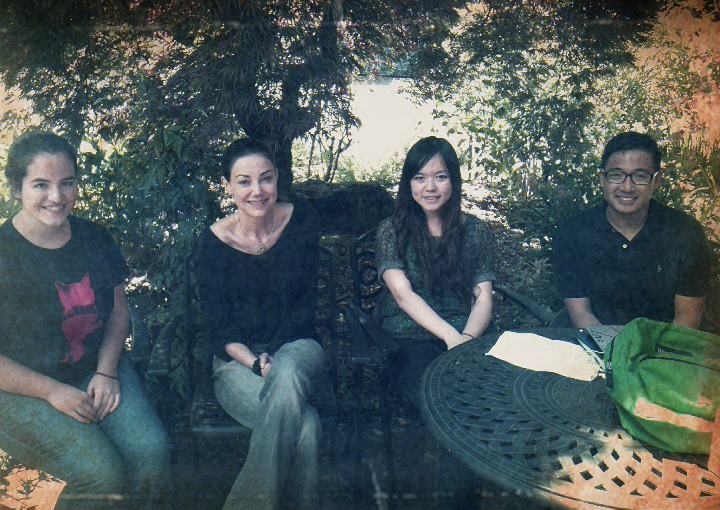Back to Teaching > Comparative Literature > Comparative Literature Sample Syllabi
Course Description
There was a great vogue for artistic and literary depictions of the near-East in nineteenth-century France. Orientalist artists and writers often drew directly upon one another’s works, and, consequently, these two modes of representation repeatedly overlapped. The result was a diverse, intertextual web of meaning.
Our class will focus on how the Orient was a topoi under construction in the nineteenth-century French imaginary. We will test the hypothesis that the Orientalists revealed significant and habitual tendencies of desire in the French psyche, as well as its fantasies and anxieties about power, control, and the accumulation of wealth.
We will approach the question of Orientalism in nineteenth-century France from a feminist standpoint. Following Yegenoglu, we may hypothesize that: “Western acts of understanding the Orient and its women are not two distinct enterprises, but rather are interwoven aspects of the same gesture” (26).[i] Thus, we will focus particularly on images and texts which portray the odalisque, the harem, and the despot, such as: Balzac’s La Fille aux yeux d’or (1834-5); Delacroix’s La Mort de Sardanapale (1828); Ingres’s Bain Turc (1862); and Flaubert’s Salammbô (1862).
Our aim will be to engage these texts within a larger theoretical debate over the problems of gender and culture, even as we seek to decipher their complex and often conflicting messages about France. Finally, we will attempt to integrate our knowledge Orientalism in nineteenth-century France with our understanding of what it means to exoticize race in today’s highly-charged political world.
Course Requirements
Class attendance and active participation: An important requirement is your informed and active participation in class. Good preparation is essential and consists of reading the literature, viewing the images, and thinking about the discussion questions posted on the course web-page. Your participation in the course list-serve is for your benefit and may be used to foster ideas.
Class presentation: Each student will be required to lead or co-lead an “Expert Discussion” for class. You will choose a literary work or image from the “primary texts” or “primary images,” give a short presentation, and then follow-up with discussion questions for the class. Your discussion should last approximately twenty minutes.
Review essays: Each student must prepare two review essays on selections from the critical or secondary texts. These essays should engage with the ideas in the text and also form an opinion based on your study of the subject at hand.
Original, critical essay: In this essay, you will explore more profoundly issues raised in class. I encourage you to start early and to come see me regularly during office hours to discuss the progress of your final paper.
● All written work should be accompanied by a full bibliography and end-notes using MLA style.
Primary Texts
(See texts on-reserve in the Library. Some texts available at the Campus Book Store. Purchase Course-Pack.)
- Balzac, Honoré. La Fille aux yeux d’or.
- Baudelaire, Charles. Les Fleurs du mal. Selection. e.g. “Bien loin d’ici”; “Au lecteur”;
- “Parfum exotique”; “A Une Malabaraise”; “Le Voyage”; “Parfum exotique.”
- —. La Vie et l’oeuvre d’Eugène Delacroix.
- Flaubert, Gustave. Salammbô.
- —. Le Voyage en Orient. Selection.
- de Lamartine, Alphonse. Souvenirs, impressions, pensées et paysages pendant un voyage en Orient, 1832-1833.
- Leconte de Lisle, Charles. Poèmes barbares. Selection.
- Loti, Pierre. Fantôme d’Orient. Selection.
- —. Les Dèsenchantées, roman des harems turcs contemporains. Selection.
- Montagu, Lady Mary Wortley. Turkish Embassy Letters.
- Zola, Emile. Au Bonheur des Dames.
Primary Images
(See texts on-reserve in the Library, most images are on the course web-page)
- Mucha, Alphonse. Salammbô. 1896.
- Bouchard, Paul-Louis. Après le bain. 1889.
- Browne, Henriette. Intérieurs de harem. 1861.
- Von Chlebowski, Stanislas. Purchasing a Slave, Constantinople. 1879.
- Delacroix, Eugène. La Mort de Sardanapale. 1828.
- Cormon, Fernand. Jalousie au sérail. 1874.
- Gérôme, Jean-Léon. Le Marché aux esclaves. Early 1860’s.
- Ingres, Jean-Auguste-Dominque. Bain turc. 1863.
- Manet, Edouard. Olympe. 1863.
- Moreau, Gustave. Apparition. Salomé. 1876.
- du Nouÿ, Jean Lecomte. L’Esclave blanche. 1888.
- Postcards reprinted in: Mallek Alloulah. Le Harem colonial.
- [i] Meyda Yegenoglu. Colonial Fantasies: Towards a Feminist Reading of Orientalism. Cambridge: Cambridge U P, 1998.
